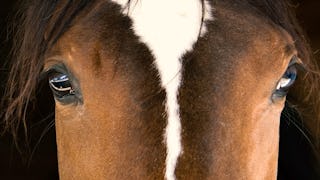This course explains the general principles of chicken behaviour and welfare, and the behavioural and physiological indicators that can be used to assess welfare in chickens kept in hobby flocks through to commercial farms. The focus is primarily on laying hens and meat chickens (broilers) although many of the principles are relevant to other types of poultry. The course is likely to be of interest to people who own chickens as pets or keep a small hobby flock, commercial egg and chicken meat producers, veterinarians and vet nurses.

Gain next-level skills with Coursera Plus for $199 (regularly $399). Save now.

Chicken Behaviour and Welfare

Instructor: Dr Victoria Sandilands
40,472 already enrolled
Included with
(1,206 reviews)
Skills you'll gain
Details to know

Add to your LinkedIn profile
6 assignments
See how employees at top companies are mastering in-demand skills

There are 6 modules in this course
This brief module will tell you all the things you need to know to begin, including the syllabus of the course, who we are, how to engage with one another.
What's included
2 videos1 reading
Welcome to the first week of the Chicken Behaviour and Welfare Course. If you haven't seen it - watch the video which introduces you to the course: you can find it under "Getting Started; Welcome!" During this lesson, we will consider what makes a domestic animal, how behaviour develops in the chicken from before hatching and beyond, different types of learning and the senses - vision, hearing, taste, smell and touch.
What's included
13 videos5 readings1 assignment
During this week, we will consider some of the major behaviour patterns of chickens, such as maintenance behaviours of chickens, and social behaviours. Maintenance behaviours means feeding, drinking, and comfort activities. Comfort activities include preening, dustbathing, and perching (among others). Social behaviours include communication, dominance, aggression, and spacing. This week will be a combination of video lectures, in-video quizzes and an interview with a backyard producer.
What's included
12 videos4 readings1 assignment
Welcome back everyone! During this week, we will consider the reproduction process in chickens, from courtship to brooding and hatching of eggs. We will then look at some abnormal behaviours that you might see in chickens. This week will be a combination of video lectures, in-video quizzes, video clips from outside sources, and a downloadable poster on eggshell abnormality.
What's included
12 videos6 readings1 assignment
During this week, we will consider what we mean by "animal welfare", and how a set of criteria known as the Five Freedoms can help you assess it. Dr Dorothy McKeegan from the University of Glasgow will discuss what the ethical obligations are of meeting an animal's welfare needs, and we will explore some of the various welfare standards that exist. Finally, we will look at welfare indicators, and Dr Barry Thorp from St David's Veterinary Team will discuss with Vicky what signs to look for in chicken flocks to make a welfare assessment. This week's Learning Outcomes: •Define 'welfare' and the Five Freedoms •What drives our ethical choices, including cost-benefit analysis •Describe some welfare standards available worldwide and how they differ •Explain ways to assess welfare, using behavioural and physiological indices
What's included
5 videos3 readings2 assignments
This is the last week of the Chicken Behaviour and Welfare course, you are almost at the finish line... During this week, we will consider the welfare of layer hens and broiler (meat) chickens, from hatch to slaughter, particularly in common commercial systems. This week's Learning Outcomes: •Compare the most common housing systems used in Europe for laying hens •Compare the most common housing systems used in Europe for broiler chickens •Discuss the pros and cons of free range housing •Describe methods of emergency killing •Discuss different transport requirements, depending on the scale •Describe some of the common methods of slaughtering poultry.
What's included
10 videos4 readings1 assignment
Instructor

Offered by
Explore more from Animal Health

The University of Edinburgh
 Status: Preview
Status: PreviewThe University of Edinburgh
 Status: Preview
Status: PreviewUniversity of California, Davis

The University of Edinburgh
Why people choose Coursera for their career




Learner reviews
1,206 reviews
- 5 stars
80.44%
- 4 stars
16.40%
- 3 stars
2.40%
- 2 stars
0.41%
- 1 star
0.33%
Showing 3 of 1206
Reviewed on Feb 28, 2024
This course is well taught and I really enjoyed how they broke up the modules into little comprehensible lessons. I learned a lot. I wish there was more material because it was an interesting course.
Reviewed on Oct 10, 2017
thoroughly enjoyed this course. taught me a great deal about things I can and should be improving for my own. Helped me understand a lot more about the commercial side too.
Reviewed on Jun 8, 2016
I found this course to be very informative for those who are beginning to learn about chickens or would like to expand their knowledge to improve conditions for their backyard flock.

Open new doors with Coursera Plus
Unlimited access to 10,000+ world-class courses, hands-on projects, and job-ready certificate programs - all included in your subscription
Advance your career with an online degree
Earn a degree from world-class universities - 100% online
Join over 3,400 global companies that choose Coursera for Business
Upskill your employees to excel in the digital economy
Frequently asked questions
To access the course materials, assignments and to earn a Certificate, you will need to purchase the Certificate experience when you enroll in a course. You can try a Free Trial instead, or apply for Financial Aid. The course may offer 'Full Course, No Certificate' instead. This option lets you see all course materials, submit required assessments, and get a final grade. This also means that you will not be able to purchase a Certificate experience.
When you purchase a Certificate you get access to all course materials, including graded assignments. Upon completing the course, your electronic Certificate will be added to your Accomplishments page - from there, you can print your Certificate or add it to your LinkedIn profile.
Yes. In select learning programs, you can apply for financial aid or a scholarship if you can’t afford the enrollment fee. If fin aid or scholarship is available for your learning program selection, you’ll find a link to apply on the description page.
More questions
Financial aid available,

